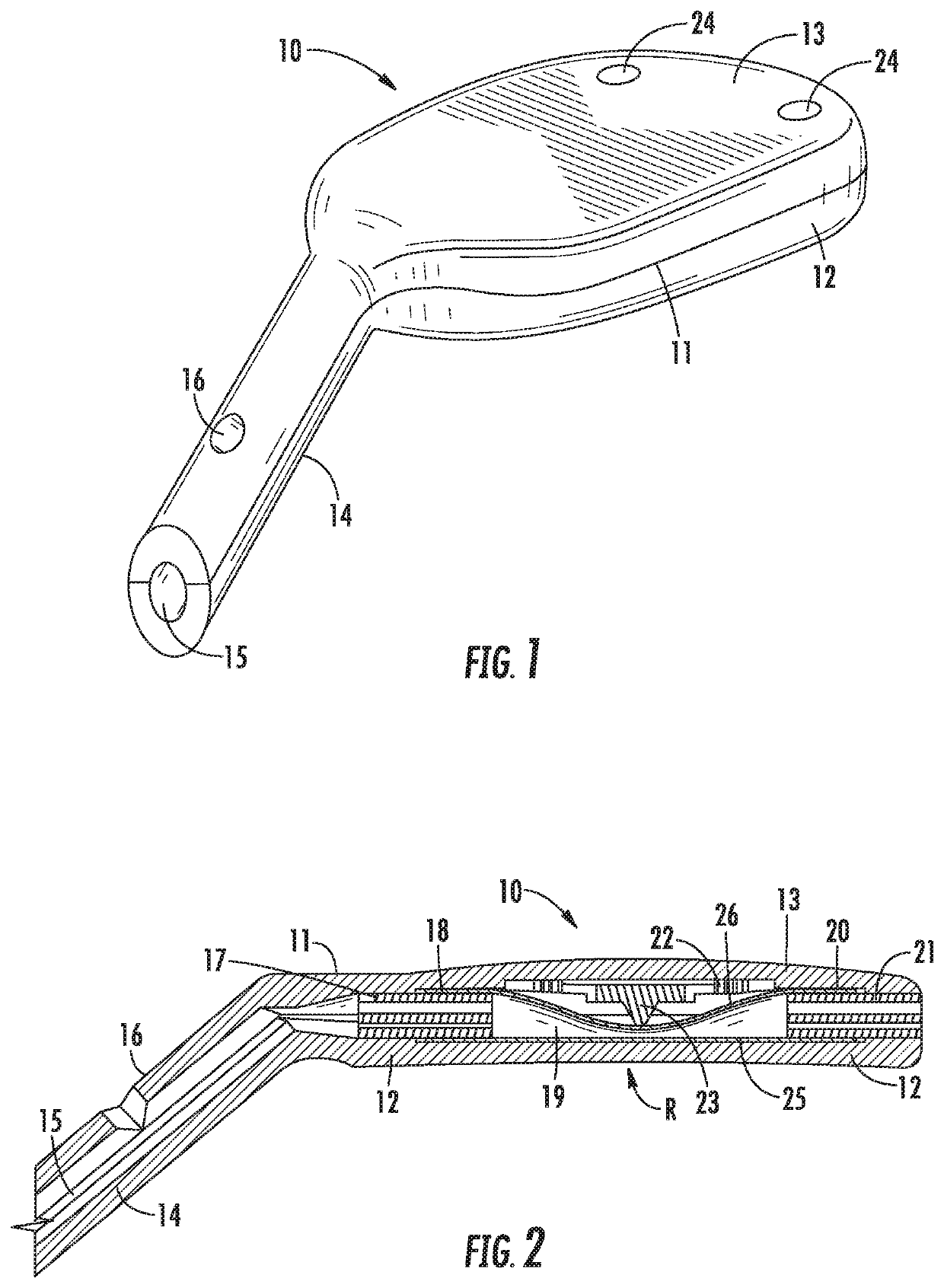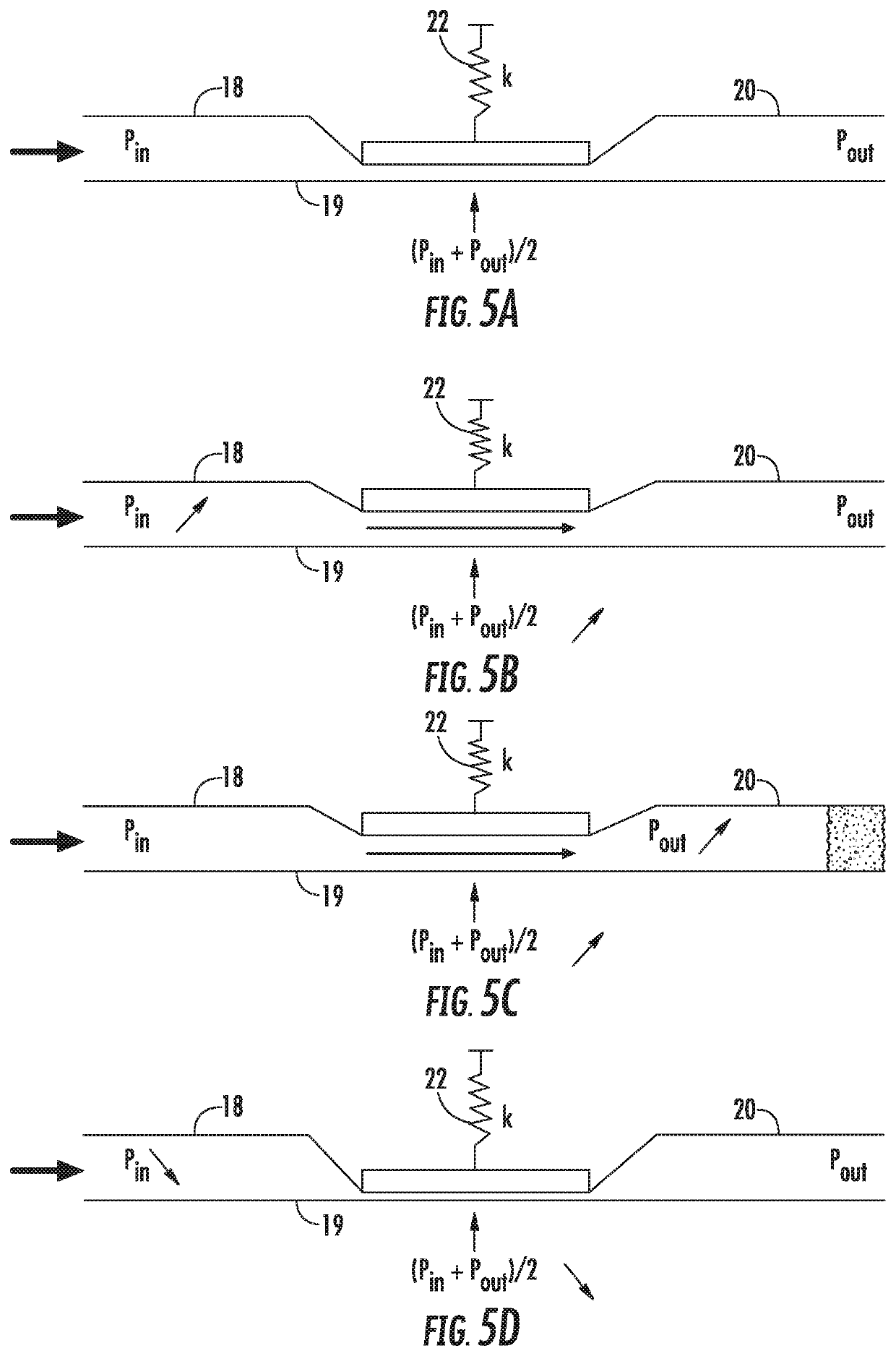Apparatus for treating excess intraocular fluid
a technology of excess intraocular fluid and apparatus, which is applied in the field of apparatus for draining excess intraocular fluid, can solve the problems of total blindness, loss of vision, optic nerve, etc., and achieve the effect of avoiding hypotony
- Summary
- Abstract
- Description
- Claims
- Application Information
AI Technical Summary
Benefits of technology
Problems solved by technology
Method used
Image
Examples
Embodiment Construction
[0045]In accordance with the principles of the present invention, an implantable device is provided to treating excessive intraocular fluid that is based upon the concept of a Starling resistor. Generally, flow through Starling resistor is determined by the interaction between a substantially constant spring force applied to a deformable tube and pressures applied at the inlet and outlet ends of the deformable tube. In a preferred embodiment, implantable device includes a deformable structure that is self-regulating to control the flow of aqueous humor from an anterior chamber of the eye, through the deformable structure, to a sink outside the eye (e.g., a bleb formed under a scleral flap or the orbital fat space of the eye). The deformable structure may be a tube, or more preferably, comprises two flat sheets welded along opposite sides to form a tube so that the sheets collapse towards one another with negligible bending moment. In an alternative embodiment, a clinician may period...
PUM
 Login to View More
Login to View More Abstract
Description
Claims
Application Information
 Login to View More
Login to View More - R&D
- Intellectual Property
- Life Sciences
- Materials
- Tech Scout
- Unparalleled Data Quality
- Higher Quality Content
- 60% Fewer Hallucinations
Browse by: Latest US Patents, China's latest patents, Technical Efficacy Thesaurus, Application Domain, Technology Topic, Popular Technical Reports.
© 2025 PatSnap. All rights reserved.Legal|Privacy policy|Modern Slavery Act Transparency Statement|Sitemap|About US| Contact US: help@patsnap.com



